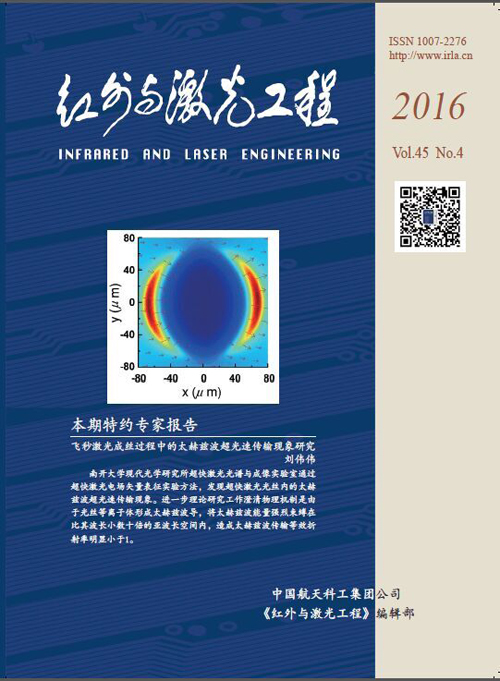|
[1]
|
赖旭东. 机载激光雷达基础原理与应用[M]. 北京:电子工业出版社, 2010. |
|
[2]
|
Ackermann F. Airborne laser scanning-present status and future expectations[J]. ISPRS Journal of Photogrammetry and Remote Sensing, 1999, 54(2-3):64-67. |
|
[3]
|
张小红. 机载激光雷达测量技术理论与方法[M]. 武汉:武汉大学出版社, 2007. |
|
[4]
|
Lindenberger J. Laser-profilmessungen zur Topographischen Gelndeaufnahme[D]. Stuttgart:Stuttgart University, 1993. |
|
[5]
|
Kilian J, Haala N, Englich M, et al. Capture and evaluation of airborne laser scanner data[J]. International Archives of Photogrammetry and Remote Sensing, 1996, 31(B3):383-388. |
|
[6]
|
Zhang K Q, Chen S C, Whitman D, et al. A progressive morphological filter for removing nonground measurements from airborne LiDAR data[J]. IEEE Transactions on Geoscience and Remote Sensing, 2003, 41(4):872-882. |
|
[7]
|
Chen Qi, Gong Peng, Baldocchi D, et al. Filtering airborne laser scanning data with morphological methods[J].Photogrammetric Engineering and Remote Sensing, 2007, 73(2):175-185. |
|
[8]
|
Sun Meiling, Li Yongshu, Chen Qiang, et al. Iterative multi-scale filter based on morphological opening by reconstruction for LiDAR urban data[J]. Infrared and Laser Engineering,2015, 44(1):363-369. (in Chinese)孙美玲, 李永树, 陈强, 等. 基于迭代多尺度形态学开重建的城区LiDAR滤波方法[J]. 红外与激光工程, 2015, 44(1):363-369. |
|
[9]
|
Axelsson P. DEM generation from laser scanner data using adaptive TIN models[J]. International Archives of Photogrammetry and Remote Sensing, 2000, 33(B4):110-117. |
|
[10]
|
Kraus K, Pfeifer N. Determination of terrain models in wooded areas with airborne laser scanner data[J]. ISPRS Journal of Photogrammetry and Remote Sensing, 1998, 53(4):193-203. |
|
[11]
|
Pfeifer N, Stadler P, Briese C. Derivation of digital terrain models in the SCOP++ environment[C]//Proceedings of Oeepe Workshop on Airborne Laserscanning and Interferometric SAR for Detailed Digital Terrain Models, 2011. |
|
[12]
|
Su Wei, Sun Zhongping, Zhao Dongling, et al. Hierarchical moving curved fitting filtering method based on LiDAR data[J]. Journal of Remote Sensing, 2009, 13(5):833-838. (in Chinese)苏伟, 孙中平, 赵冬玲, 等. 多级移动曲面拟合LiDAR数据滤波算法[J]. 遥感学报, 2009, 13(5):833-838. |
|
[13]
|
Sun Chongli, Su Wei, Wu Honggan, et al. Improved hierarchical moving curved filtering method of LiDAR data[J]. Infrared and Laser Engineering, 2013, 42(2):349-354. (in Chinese)孙崇利, 苏伟, 武红敢, 等. 改进的多级移动曲面拟合激光雷达数据滤波方法[J]. 红外与激光工程, 2013, 42(2):349-354. |
|
[14]
|
Sithole G, Vosselmann G. Filtering of airborne laser scanner data based on segmented point clouds[C]//ISPRS Workshop Laser Scanning, 2005. |
|
[15]
|
Huang Xianfeng, Li Hui, Wang Xiao, et al. Filter algorithms of airborne LiDAR data:review and prospects[J]. Acta Geodaetica et Cartographica Sinica, 2009, 38(5):466-469. (in Chinese)黄先锋, 李卉, 王潇,等. 机载LiDAR数据滤波方法评述[J]. 测绘学报, 2009, 38(5):466-469. |
|
[16]
|
Zuo Zhiquan, Zhang Zuxun, Zhang Jianqing, et al. A high-quality filtering method with adaptive TIN models for urban LiDAR points based on priori-knowledge[J]. Acta Geodaetica et Cartographica Sinica, 2012, 41(2):246-251. (in Chinese)左志权, 张祖勋, 张剑清, 等. 知识引导下的城区LiDAR点云高精度三角网渐进滤波方法[J]. 测绘学报, 2012, 41(2):246-251. |
|
[17]
|
Yuan Qing, Lou Lizhi, Chen Weixian. The application of the weighted total least-squares to three dimensional-datum transformation[J]. Acta Geodaetica et Cartographica Sinica, 2011, 40(S1):115-119. (in Chinese)袁庆, 楼立志, 陈玮娴. 加权总体最小二乘在三维基准转换中的应用[J]. 测绘学报, 2011, 40(S1):115-119. |
|
[18]
|
Felus Y A, Schaffrin B. Performing similarity transformations using the error-in-variables model[C]//ASPRS 2005 Annual Conference Baltimore, 2005. |
|
[19]
|
Kukush A, Huffel S V. Consistency of elementwise-weighted total least squares estimator in a multivariate errors-in-variables model AX=B[J]. Metrika, 2004, 59:75-97. |
|
[20]
|
Sithole G, Vosselman G. Experimental comparison of filter algorithms for bare-Earth extraction from air-borne laser scanning point clouds[J]. ISPRS Journal of Photogrammetry Remote Sensing, 2004, 59(1-2):85-101. |
|
[21]
|
Shen Jing. Airborne LiDAR data filtering by morphological reconstruction method[J]. Geomatics and Information Science of Wuhan University, 2011, 36(2):167-170, 175. (in Chinese)沈晶. 用形态学重建方法进行机载LiDAR数据滤波[J]. 武汉大学学报(信息科学版), 2011, 36(2):167-170, 175. |









 DownLoad:
DownLoad: